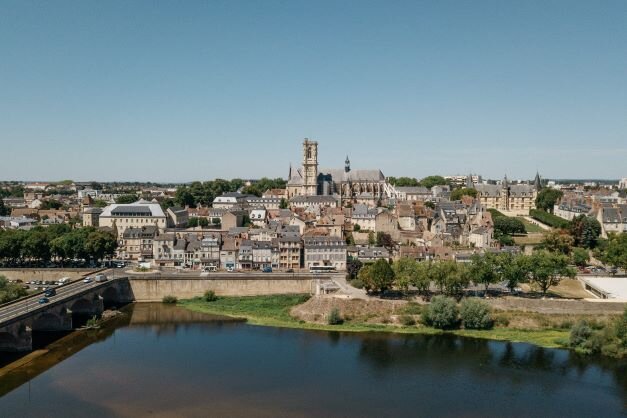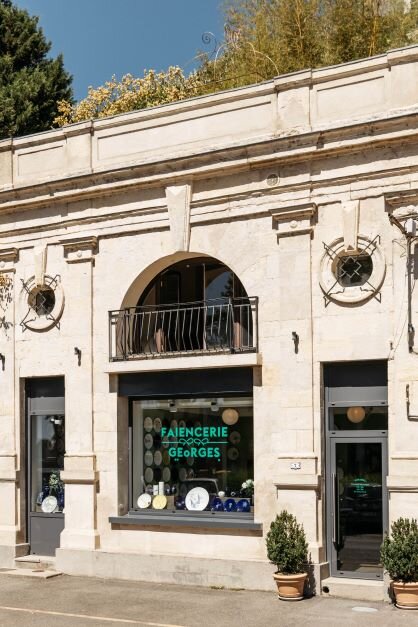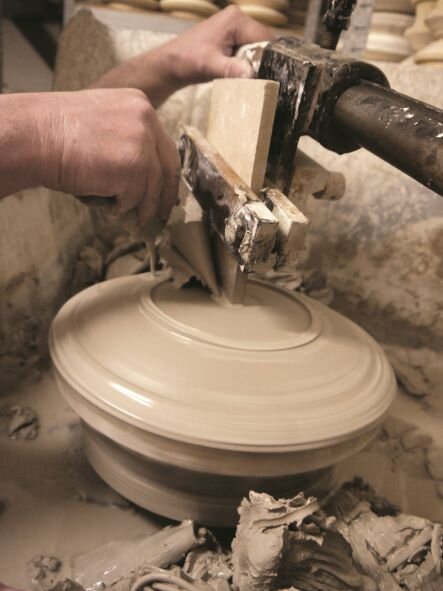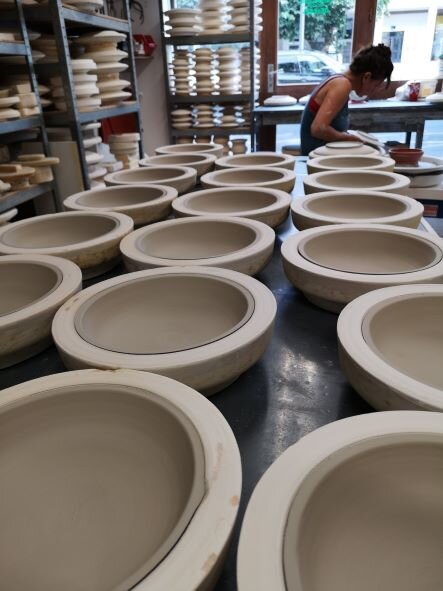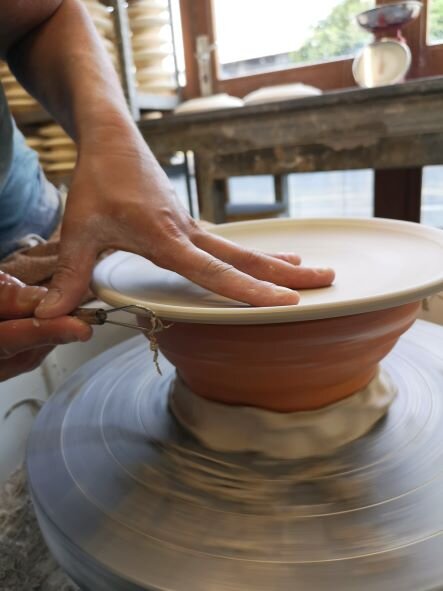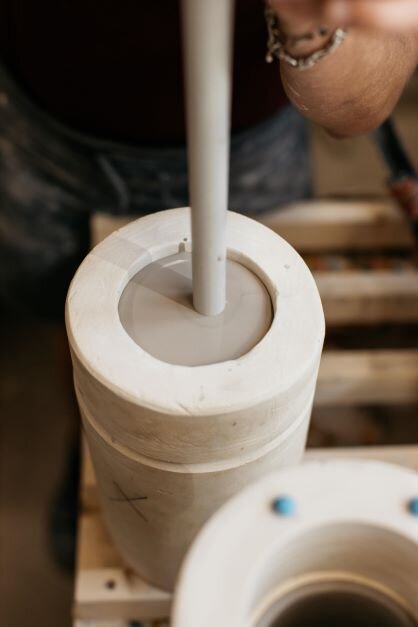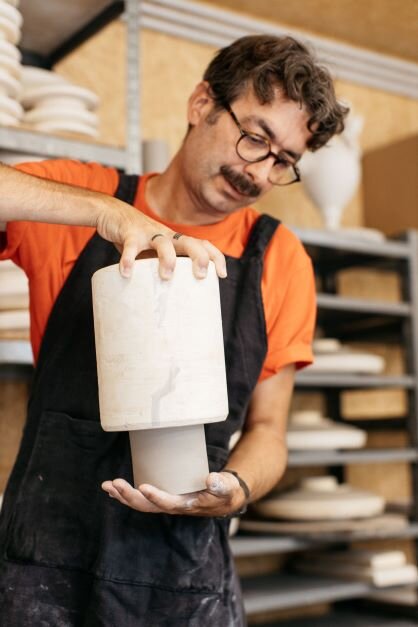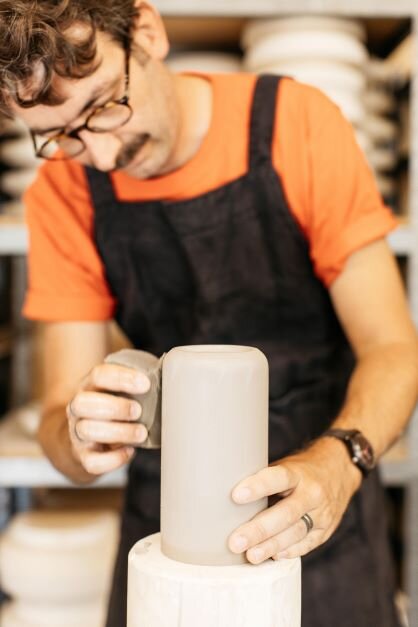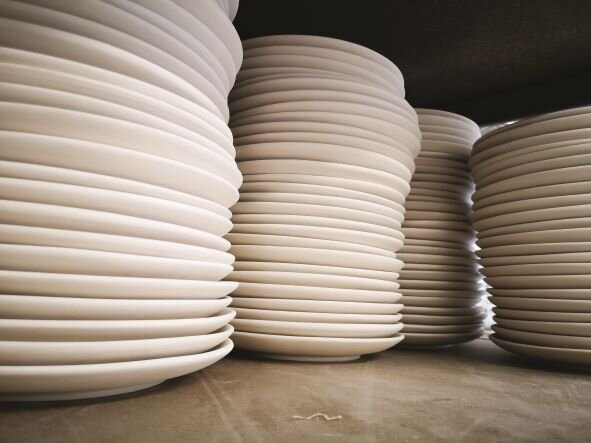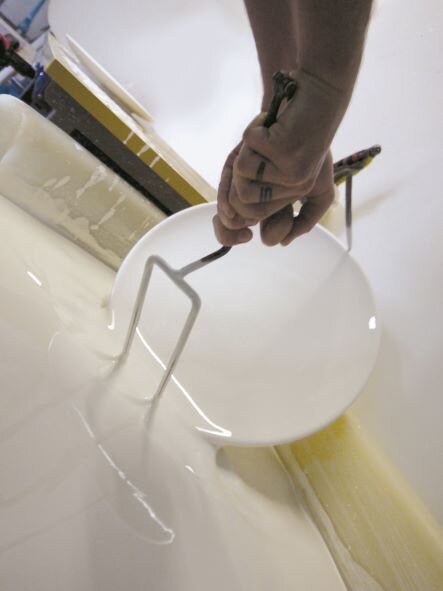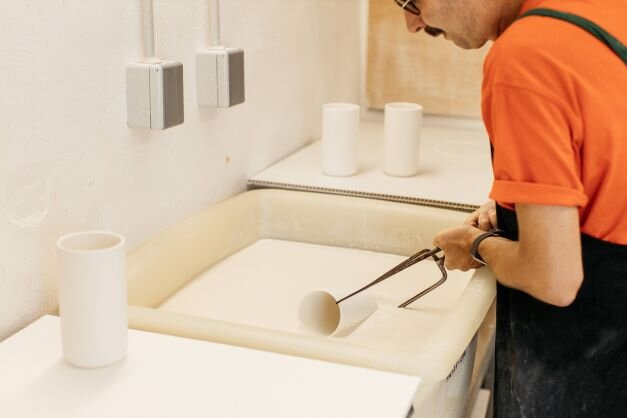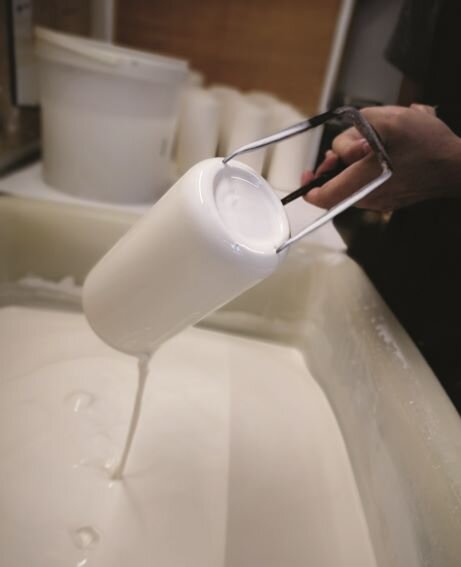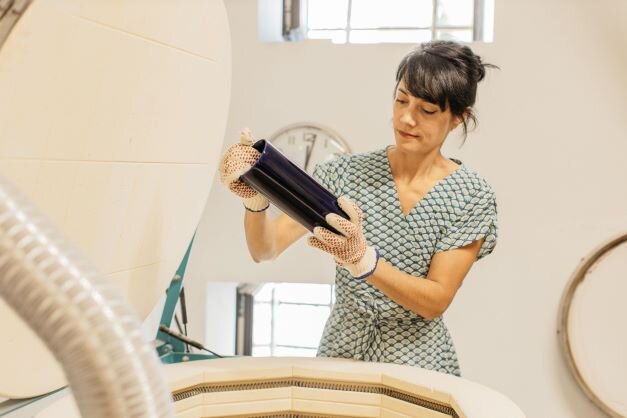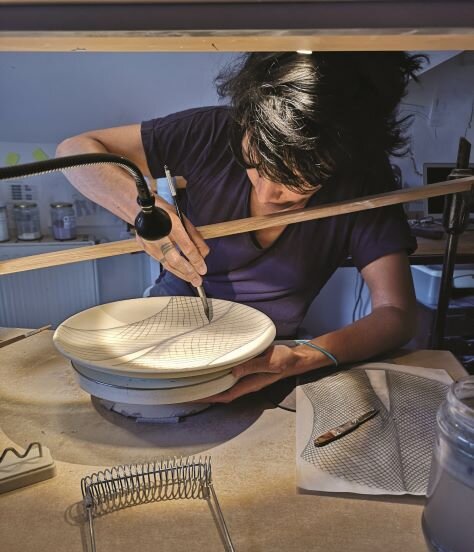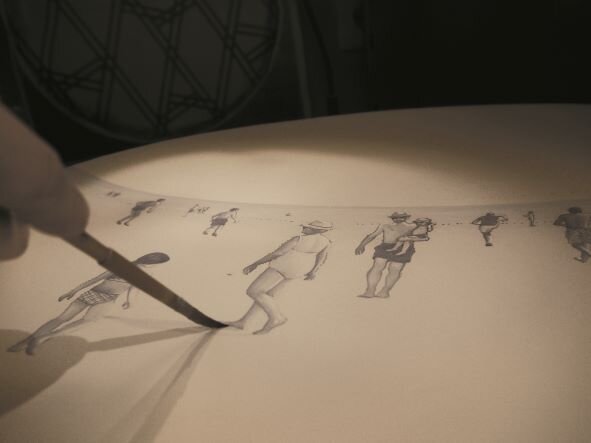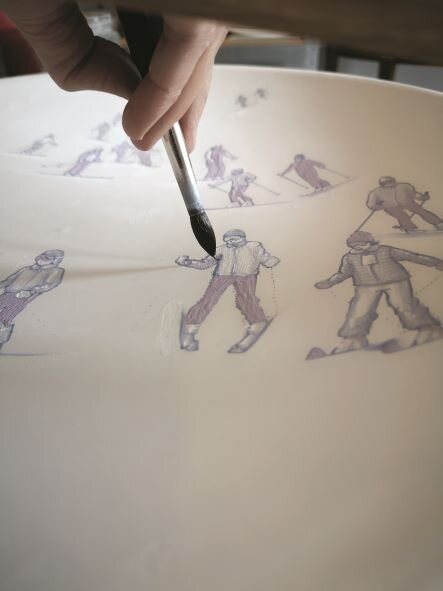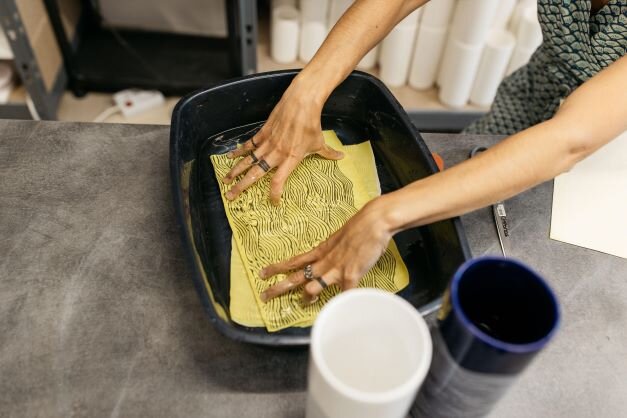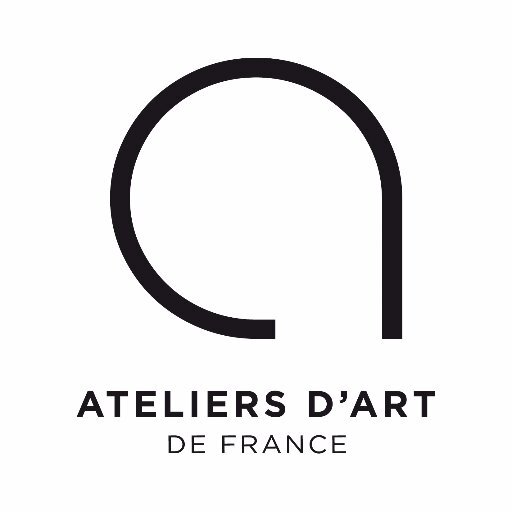Des assiettes Made in France depuis 1898
images Slashtag Studio - son David Leroy
Notre atelier de fabrication à Nevers, en France
Situé au 7 quai de Mantoue, à côté de notre boutique, il est le lieu de fabrication de toutes nos faïences : des assiettes, mais aussi des plats, des vases et des gobelets. Faïenciers à Nevers depuis 4 générations, nous maitrisons toutes les étapes de fabrication de pièces de table et de décoration :
- la fabrication des moules en plâtre,
- le travail de la terre : calibrage et coulage,
- l’émaillage,
- le décor : peinture à la main et pose de chromos,
- les cuissons.
Chacune de ces étapes fait appel à des gestes manuels très précis, qui nous ont été transmis de génération en génération depuis 1898. Quatre générations de faïenciers qui se sont succédées en respectant des méthodes de fabrication traditionnelles, tout en recherchant constamment à améliorer leurs techniques et la qualité des pièces.
Depuis le début du XXème siècle, le symbole des deux nœuds verts signe chacune de nos pièces et garantie qu’elles ont été fabriquées dans notre atelier, à Nevers. Cette signature vous certifie une fabrication dans les règles de l’art de la faïence française.
Nevers, l’un des berceaux de la faïence française, au bord de la Loire ©Yann Audic
Le centre-ville de Nevers ©Yann Audic
L’atelier de fabrication de Faïencerie Georges ©Yann Audic
Le calibrage
C’est la technique utilisée pour la fabrication des assiettes et des plats. Le calibrage se pratique sur une calibreuse, sur laquelle est fixé un moule en plâtre. On pose sur ce moule une galette d’argile sur laquelle on fait descendre une lame de métal (le calibre) qui va plaquer l’argile sur la surface du moule et ainsi lui donner sa forme.
On peut calibrer en bosse (assiette plate) ou en creux (assiette creuse).
Juste après le calibrage on pratique une opération de finition manuelle très importante : le tournasage. Cette étape vise à donner un fini parfait au bord des assiettes. Après avoir placé la pièce sur le tour, on enlève le surplus de terre avec un outil appelé le tournassin et on lisse les aspérités de son bord afin d’obtenir une pièce avec un excellent état de surface.
Le calibrage d’une assiette made in France
Des assiettes creuses sèchent dans leurs moules après le calibrage
L’étape manuelle du tournasage
Le coulage
C’est la technique utilisée pour fabriquer les vases et les gobelets.
On coule de la barbotine (terre liquide) dans un moule en plâtre. Le plâtre, qui est poreux, va lentement absorber l’eau de la barbotine et se recouvrir, petit à petit, d’une pellicule d’argile. Quand celle-ci est de la bonne épaisseur, on vide l’excédent de barbotine, puis on démoule la pièce.
Celle-ci va sécher lentement ; le temps de séchage dépend beaucoup du taux d’humidité et de la température extérieure, ainsi il varie selon les saisons ! Puis on pratique plusieurs opérations manuelles de finitions et de ponçage, afin d’obtenir une pièce lisse, sans aspérités, prête pour la première cuisson.
Le coulage d’un vase dans son moule en plâtre ©Yann Audic
Le démoulage d’un vase ©Yann Audic
La finition manuelle d’un vase ©Yann Audic
La première cuisson
La première cuisson de biscuit dure 9 heures, pendant lesquelles le four montera lentement jusqu’à la température de 1050° C. Les pièces sont empilées dans le four selon une organisation très précise, afin d’en mettre le plus possible, tout en assurant un bon calage et sans qu’elles se touchent ! Ainsi l’enfournement et le défournement sont des opérations qui peuvent s’avérer longues et délicates…
A la fin de la première cuisson, la pièce obtenue est plus solide que la pièce crue, mais elle est toujours poreuse, prête à recevoir l’émail. C’est le biscuit.
L’ouverture du four à la fin de la première cuisson ©Yann Audic
Des piles d’assiettes en biscuit
L’émaillage
La pièce en biscuit est plongée à la main dans un bain d’émail, additionné d’oxydes qui lui confèrent sa couleur. Chez Faïencerie Georges, nous utilisons plusieurs couleurs d’émail : le blanc (étain), le bleu de Nevers (cobalt), le jaune et le noir. Le biscuit étant poreux, il va immédiatement absorber l’eau contenue dans l’émail : ne subsiste alors sur la pièce qu’une fine couche d’émail cru, poudreux.
Puis la pièce émaillée est soumise encore à plusieurs opérations de finition manuelle destinées à “réparer” les coulures d’émail et les traces des outils de trempage, avant la cuisson.
Voici comment on émaille une assiette made in France !
L’émaillage d’un vase ©Yann Audic
L’émaillage de l’intérieur du vase
La deuxième cuisson
Les pièces destinées à être décorées à la main partent directement à l’atelier de décor, car nous décorons sur émail cru. Après décoration, elles seront cuites à une température de 1000° C.
Les pièces qui seront décorées par application d’un chromo subissent d’abord leur 2nde cuisson, qui va vitrifier l’émail et lui donner sa solidité et sa brillance. Cette cuisson à 1150° C, une température supérieure à celle utilisée traditionnellement dans la faïence de Nevers, permet d’améliorer la solidité des pièces et leur durabilité.
Le contrôle qualité après la deuxième cuisson ©Yann Audic
Le décor à la main
Tous nos décors à la main sont réalisés sur émail cru, c’est-à-dire avant la 2ème cuisson. Cette technique traditionnelle de Nevers, héritée de quatre générations de décorateurs, signe la qualité et la délicatesse de nos décors.
Les couleurs, composées d’oxydes métalliques, sont appliquées au pinceau et à main levée.
L’étape préparatoire du poncif consiste à dessiner le décor sur une feuille de papier calque percée de petits trous pour en reporter ensuite les grandes lignes sur la pièce, avant de peindre chaque détail.
Une technique ancestrale qui distingue vos assiettes made in France et les rend uniques.
Carole Georges peint à la main une assiette
Détail du décor de notre grand plat “A la plage” qui nécessite 1 heure de peinture à la main
Détail du décor de notre grand plat “Première étoile”
La chromographie
La chromographie est une technique de décoration par transfert d’un dessin sérigraphié à l’oxyde. Les transferts ou chromos sont réalisés chez notre imprimeur spécialisé à Limoges.
Le chromo doit être trempé dans l’eau, puis positionné à la main sur une pièce émaillée ayant déjà subit sa 2ème cuisson : une opération délicate selon la forme de la pièce et le raccord du décor à respecter. Les pièces décorées par chromo doivent ensuite être recuites une 3ème fois à une température de 9OO° C. Cette cuisson permet de fusionner le chromo avec l’émail et de le rendre inaltérable. Ainsi les assiettes et pièces décorées avec un chromo passent au lave-vaisselle et sont plus adaptées à une utilisation quotidienne que les pièces peintes à la main.
Le chromo est d’abord trempé dans l’eau pour le débarrasser de son papier ©Yann Audic
La pose d’un chromo à la main autour d’un vase ©Yann Audic
Ce qui fait la spécificité de notre savoir-faire
Nous fabriquons de puis quatre générations des assiettes made in France, fabriquées et décorées dans notre atelier.
Voici les éléments clés qui nous distinguent et font la spécificité de notre savoir-faire :
Notre maîtrise de toute la chaine de fabrication de la terre au décor.
La décoration à la main sur émail cru : un savoir-faire rare et exigeant, transmis depuis 4 générations, et qui requiert un véritable talent pictural.
L’importance du geste manuel à chaque étape de fabrication : entre le façonnage de la pièce et sa décoration, ce sont des dizaines d’heures de travail et pas moins de 3O étapes différentes, toutes réalisées à la main.
Des températures de cuisson élevées pour les pièces décorées par application de chromos. Une constante recherche dans l’amélioration de la solidité de nos pièces.
En reconnaissance de ce savoir-faire et de notre production 100% française, Faïencerie Georges est labellisée Entreprise du Patrimoine vivant (label EPV) et membre d’Ateliers d’Art de France.
N.B. : ce savoir-faire manuel engendre des signes distinctifs qui font le charme des céramiques artisanales. Ainsi, une légère variation dans la forme, le décor et la couleur des pièces entre elles est normale et ne constitue pas un défaut.
Notre savoir-faire en vidéo
Du calibrage des assiettes à leur décoration à la main, découvrez en vidéo chaque étape de la fabrication de la grande grue, réalisée spécialement pour le Musée de la Faïence, à Nevers.

